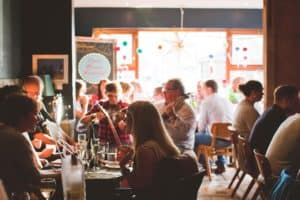The Bullrings of Spain: A Deep Dive into Controversy, Culture and Tradition
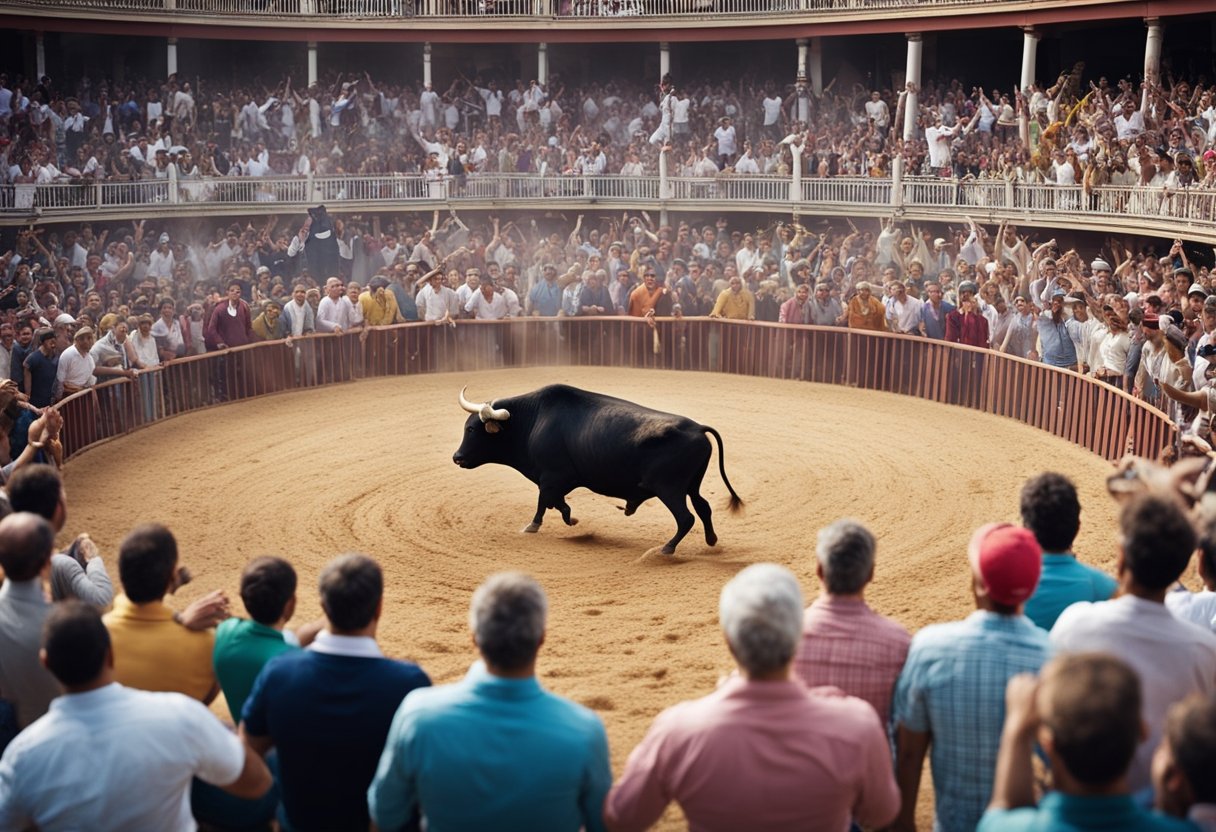
Updated On: April 23, 2024 by Maha Yassin
The bullrings of Spain are grand stages where tradition and controversy meet, encapsulating the soul of Spanish culture and heritage. These theatres have witnessed the historical evolution of Spanish bullfighting, an activity deeply interwoven with the national identity. For centuries, they have been arenas of spectacle and bravery, showcasing the key elements of bullfighting that resonate with symbolism and pageantry.
Despite its significance, the art of bullfighting stands at the centre of a heated debate, confronting modern sentiments with an age-old practice. The bullrings, often architectural marvels, echo the stories of famed matadors and the bulls they faced, continuing to draw crowds and fostering social and economic considerations around their existence. As Spain navigates the influence of modern trends, the future trajectory of Spanish bullfighting and its arenas remains as contested as the spectacle itself.
Historical Evolution of Spanish Bullfighting
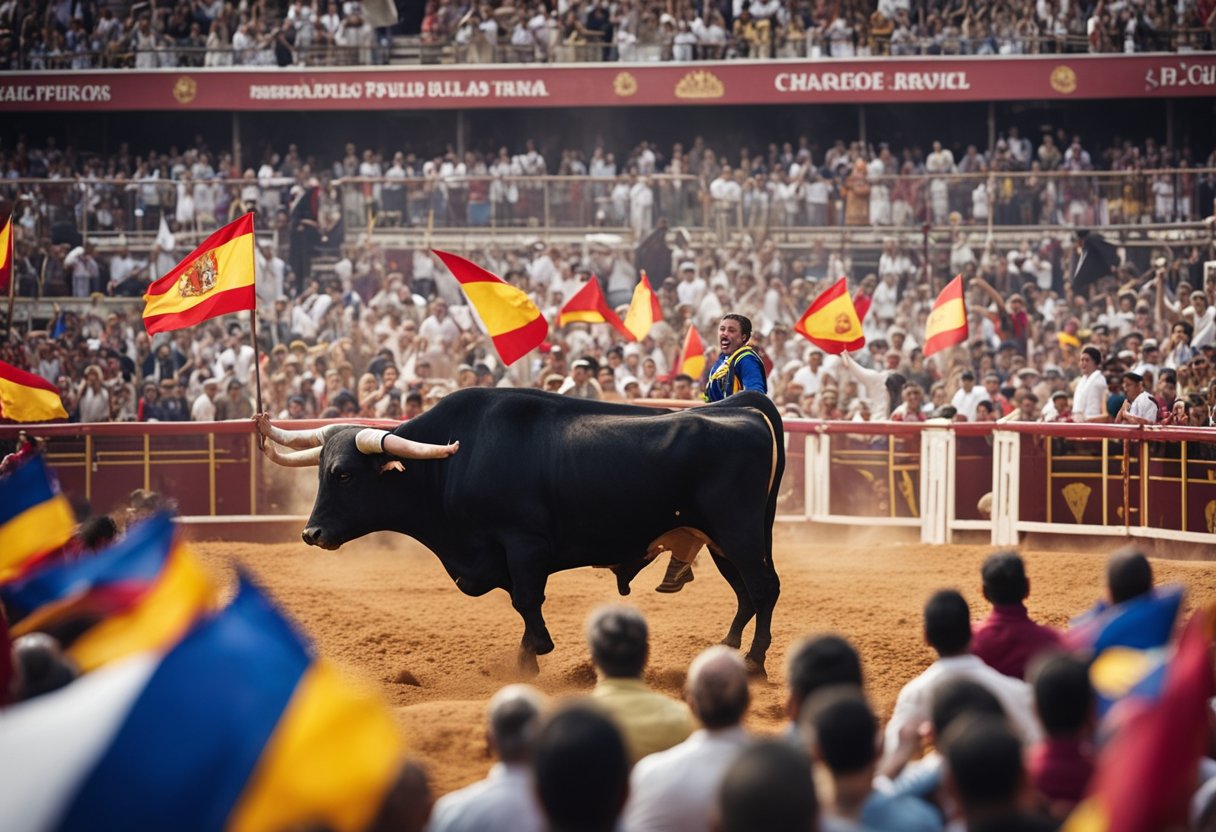
In exploring the historical evolution of Spanish bullfighting, we uncover its ancient beginnings and trace the pivotal transformations that have shaped this cultural spectacle into the tradition known today as the corrida de toros.
Ancient Roots and Roman Influence
Spanish bullfighting, with its rich historical tapestry, can be traced back to ancient civilisations, including the Romans, who held a strong fascination with bull games. These early forms of bull entertainment were both a test of bravery and a display of human dominance over beasts. The encounter between man and bull was not only a sport but a ritual that signified strength and heroism, embedded deeply within the cultural heritage of the time.
Moorish Impact and the Modern Corrida
With the advent of Muslim rule in Spain, bullfighting underwent significant changes. Despite the initial disapproval of such forms of entertainment, the Moors introduced a variety of equestrian skills to the practice, contributing to the pageantry and skill that would later define the corrida de toros. In time, what began as a nobleman’s pursuit evolved, opening to commoners and laying the foundations for contemporary Spanish bullfighting. This period witnessed the birth of the modern ‘corrida’, a structured event with professional matadors facing off against bulls in a public spectacle that profoundly underscored Spanish identity and tradition.
Cultural Significance and National Identity of The Bullrings
In Spain, the bullring is more than a mere venue; it’s a symbol deeply ingrained in the country’s national identity, intertwining art and entertainment with longstanding traditions and cultural significance.
Spanish Bullfighting as Art and Entertainment
We witness in the bullrings of Spain a complex performance that blurs the lines between sport and theatrical drama. Spanish bullfighting, or corrida de toros, as the Spanish refer to it, carries a history that stretches back to ancient times, establishing itself as a form of entertainment fuelled by dramatic flair and passionate spectacle. In the fabric of Spanish society, these events are seen not merely as contests but as expressions of artistry, where matadors showcase their skill and bravery in a balletic interplay with the toro, the bull.
Symbolism and Rituals in Spanish Life
The rituals within the bullring resonate deeply with Spanish cultural motifs, reflecting national identity and cultural significance through every pass and manoeuvre. These rituals, carefully preserved over centuries, capture elements of life, death, and honour like few other Spanish customs do. Each tercio or stage of the bullfight, from the display of the toreros adorned in their traje de luces, the ‘suit of lights’, to the final act, is laden with symbolism. It paints a picture of the enduring themes of human endeavour against nature that are as relevant today as they were in the past.
Social and Economic Considerations
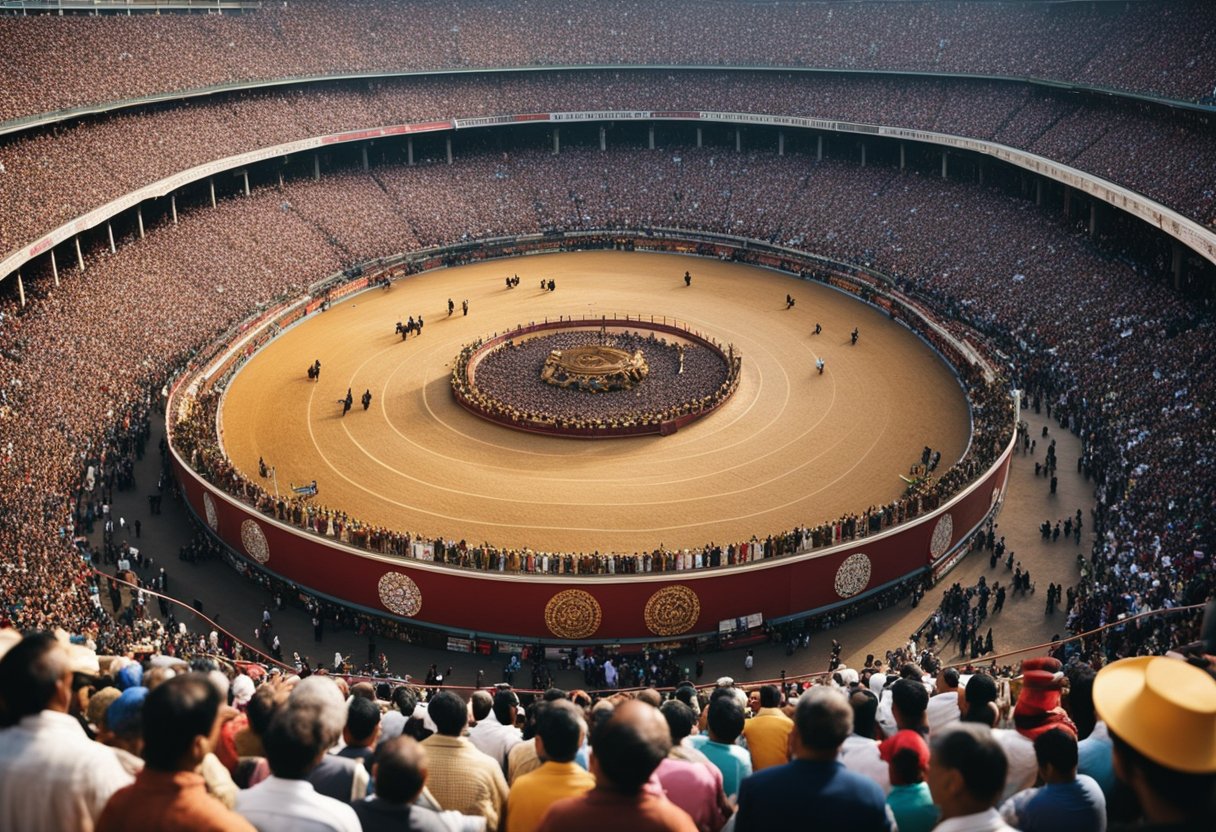
In examining the social and economic impacts of bullfighting, it’s pivotal to consider the industry’s contribution to Spain’s economy and its role in supporting local employment. The following subsections will unpack these dimensions, focusing on specifics such as revenue generation and the livelihood of community members tied to this tradition.
Bullfighting’s Role in the Spanish Economy
Spanish Bullfighting has historically been a signatory pastime in Spain, often seen as a draw for tourism that contributes to the national economy. Beyond ticket sales, which are a substantial source of revenue for the economy, bullfighting festivals spur a cascade of economic activity. This includes promoting local hotels, restaurants, and other services catering to spectators. Estimates suggest that the bullfighting industry injects a significant sum into Spain’s overall economic output annually.
Employment and Local Communities
The tradition of Spanish bullfighting is deeply interwoven with community identities in Spain, especially within rural areas where local employment often revolves around these events. Numerous jobs are tied directly to the bullring, from matadors and assistants to those in charge of arena maintenance. Moreover, breeders of fighting bulls hold a crucial position in this ecosystem, providing animals for events and sustaining their farms and families through this practice. These jobs support local economies and are a source of employment for many, making the prospect of changes to or abolishing bullfighting a significant concern for these communities.
Controversial Aspects of Spanish Bullfighting
In the complex cultural tapestry of Spain, bullfighting stands out as a tradition enmeshed with both deep cultural significance and profound controversy. Our discussion zeroes in on the ethical clashes and the momentum gathered by legal challenges to the practice.
Ethical Debates and Animal Rights
Spanish Bullfighting is a subject of intense ethical debate. Animal rights activists emphatically criticise the tradition as a display of cruelty towards bulls, claiming it causes unnecessary suffering and death to the animals for the sake of entertainment. The concerns of animal rights activists particularly highlight the distress and injury inflicted on the bulls during a corrida.
Legal Bans and Opposition Movements
The chorus of opposition has not just been vocal but has also resulted in tangible legal actions. Various regions in Spain, such as Catalonia, have implemented a ban on bullfighting, reflecting a shifting societal perspective. Political parties like PACMA (Party Against Mistreatment of Animals) have emerged, undergirding the legislative push against bullfighting, while opposition movements continue to advocate for national prohibitions.
Key Elements of the Bullfight

In the traditional Spanish bullfighting event known as the corrida, both the prowess of the matador and the ritualised stages are essential components that draw spectators into the arena. We’ll explore the significance of the matador’s role and the meaning behind each part of the corrida.
The Role of the Matador
The matador, also known as the torero, is the leading performer in the art of Spanish bullfighting. Clad in a traditional costume called the “suit of lights,” they are tasked with the calculated choreography of the fight, aiming to demonstrate their control and courage. With their cape, they perform intricate, precise movements that are as much a display of athleticism as they are of cultural expression.
Stages of the Corrida and Their Meaning
The corrida is divided into three key stages, known as tercios. Each stage represents a distinct aspect of the ritual passed down through generations.
- Tercio de Varas (The Lancing Third): This initial phase involves the bull entering the ring, where it encounters the picadors. They test the bull’s ferocity and weaken its neck muscles for the following stages.
- Tercio de Banderillas (The Flagging Third): In the second stage, the banderilleros place banderillas—brightly decorated barbed sticks—into the bull’s shoulders. This act further tests the bull’s agility and endurance.
- Tercio de Muerte (The Death Third): The final stage culminates with the matador re-entering the arena with a smaller red cape, the muleta, and a sword. Here, the matador must exhibit utmost skill and precision to perform the faena, a series of passes leading to the bull’s eventual killing by the matador, which should be quick and humane.
During the entirety of the corrida, the arena resonates with the interplay of danger and beauty as the bull and matador engage in a sport steeped in tradition and surrounded by controversy.
Symbolism and Pageantry
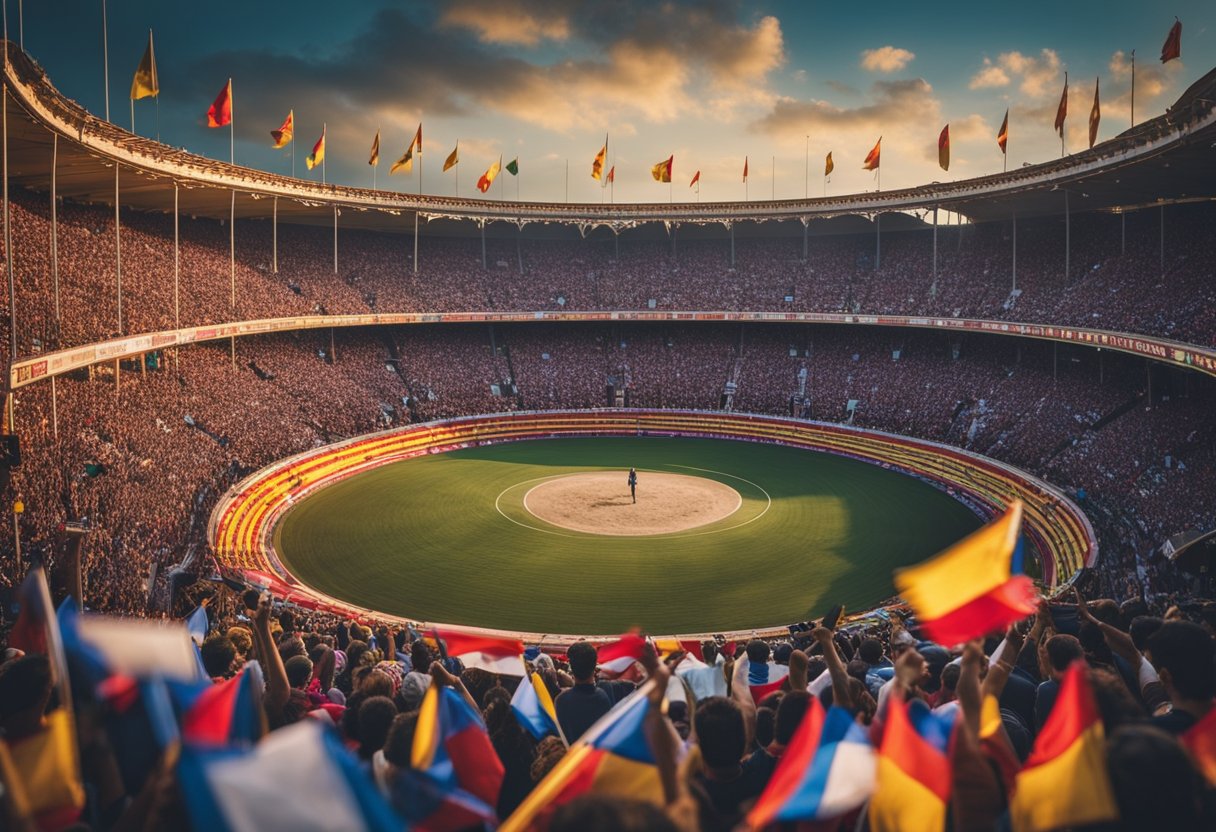
In the ceremonial world of Spanish bullfighting, symbolism and pageantry are interwoven into every aspect, from the traje de luces worn by the matador to the dramatic music that fills the Plaza de Toros. These elements are not mere accessories but integral parts of the spectacle that reflect tradition and skill.
Tradicional Attire: Traje de Luces
The Traje de Luces or ‘suit of lights’ is a quintessential part of bullfighting pageantry. Adorned with gold or silver sequins and embroidery, the suit’s dazzling design serves more than an aesthetic purpose; it symbolises the matador’s prowess and courage. Every element, from the montera (hat) to the zapatos (shoes), is steeped in tradition and is meticulously chosen to honour the past while showcasing the matador’s skill within the arena.
Musical and Theatrical Elements in the Arena
As the matador steps into the Plaza de Toros, music heralds the start of the bullfight, often with traditional pasodobles that set a tone of anticipation and grandeur. These musical accompaniments are not just background soundtracks; they play a dramatic role in heightening the tension and celebrating the matador’s manoeuvres. Each phase of the bullfight, marked by its rituals and drama, is punctuated by specific musical cues, ensuring that the auditory experience is as integral as the visual spectacle unfolding in Spain’s historic bullrings.
Famous Bullrings and Their Stories
The bullrings of Spain are more than just sports arenas; they are symbols of cultural heritage and architectural marvels that tell the tales of cities like Madrid, Ronda, and Seville. Each ring holds stories of tradition and controversy, capturing the essence of Spanish culture.
The Iconic Plaza de Toros de Las Ventas
Madrid is home to the Plaza de Toros de Las Ventas, a spectacle of architecture and the state’s most important bullring. Opened in 1931, it boasts a seating capacity of over 23,000, making it the largest bullring in Spain and one of the most prestigious in the world. Las Ventas is recognised for the grandeur of its Mudéjar-style façade and has become a central arena in the bullfighting circuit. The corridas held here are often considered the pinnacle of a bullfighter’s career due to the arena’s prominence and the audience’s deep knowledge of the tradition.
Bullring Circuits: Seville to Ronda
The bullring circuit connecting Seville and Ronda encapsulates the deep-seated traditions of Andalusian bullfighting. Seville’s Plaza de Toros de la Real Maestranza is celebrated for its baroque architecture and is one of Spain’s oldest and most significant bullrings. Meanwhile, Ronda boasts the Plaza de Toros de Ronda, established in the 18th century, and is revered as one of the country’s oldest and most monumental bullrings. As the birthplace of modern bullfighting, Ronda’s bullring is a crucial part of the town’s identity, playing a pivotal role in the history of the corrida.
Bullfighting Beyond Spain
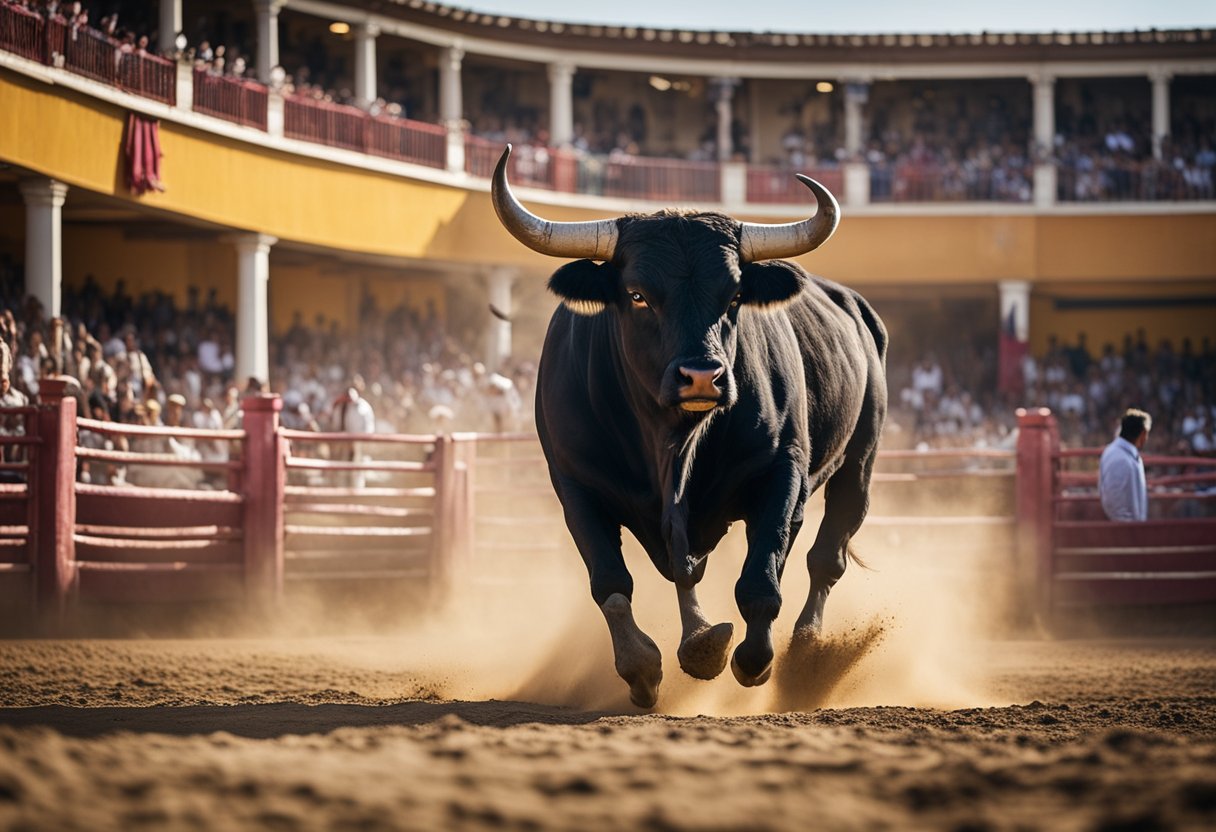
While bullfighting is often associated with Spain, this tradition has left its mark internationally, with particular influence in Portugal and Latin America and shaping perceptions across other countries.
Cultural Exchange with Portugal and Latin America
In Portugal, bullfighting (touradas) exhibits unique traditions; unlike Spanish corridas, it’s illegal to kill the bull in the ring. The horse-mounted bullfighters (cavaleiros) demonstrate a distinct art form, emphasising spectacle over the lethal showdown. Meanwhile, Latin America shares this Spanish heritage, notably in Mexico and Peru, where corridas remain popular, intertwining pre-Hispanic influences with colonial legacies.
International Perceptions and Influences
Internationally, bullfighting’s presence can be credited significantly to Ernest Hemingway. His writings, particularly “The Sun Also Rises” and “Death in the Afternoon,” introduced the English-speaking world to the intricate rituals of bullfighting, generating both fascination and controversy. As a result, while many countries remain critical of bullfighting due to animal welfare concerns, others continue to explore the cultural complexities beyond its Spanish origins.
The Influence of Modern Trends
In examining the evolution of bullfighting in Spain, we observe the profound impact of modern trends, particularly as they pertain to its presence in the digital landscape and the challenges presented by the pandemic.
Bullfighting in the Digital Era
The digitalisation of culture has catapulted traditional events like bullfighting into the virtual limelight. Social media has proven instrumental in introducing bullfighting to newer, more diverse audiences. Platforms such as Instagram and Twitter are flooded with vivid imagery and footage of bullfighting events, making the once-exclusive experience accessible to anyone with an internet connection. This has inevitably led to some events going viral, reaching viewers well beyond Spain’s borders. Major Spanish news outlets such as El País regularly feature bullfighting content, sparking online discussions that amplify its cultural presence.
Impact of the Pandemic on Spanish Bullfighting Traditions
The pandemic has indelibly altered the fabric of many cultural spectacles, bullfighting included. On one hand, strict safety measures and lockdowns brought traditional Spanish bullfighting events to a standstill. On the other hand, organisers pivoted towards digital streaming and limited event attendance to keep the tradition alive. The pandemic underscored the fragility of such cultural practices yet highlighted tradition’s resilience amidst unprecedented global challenges. Our collective concern has since been focused on balancing public safety with preserving cultural heritage.
Future Trajectory of Spanish Bullfighting
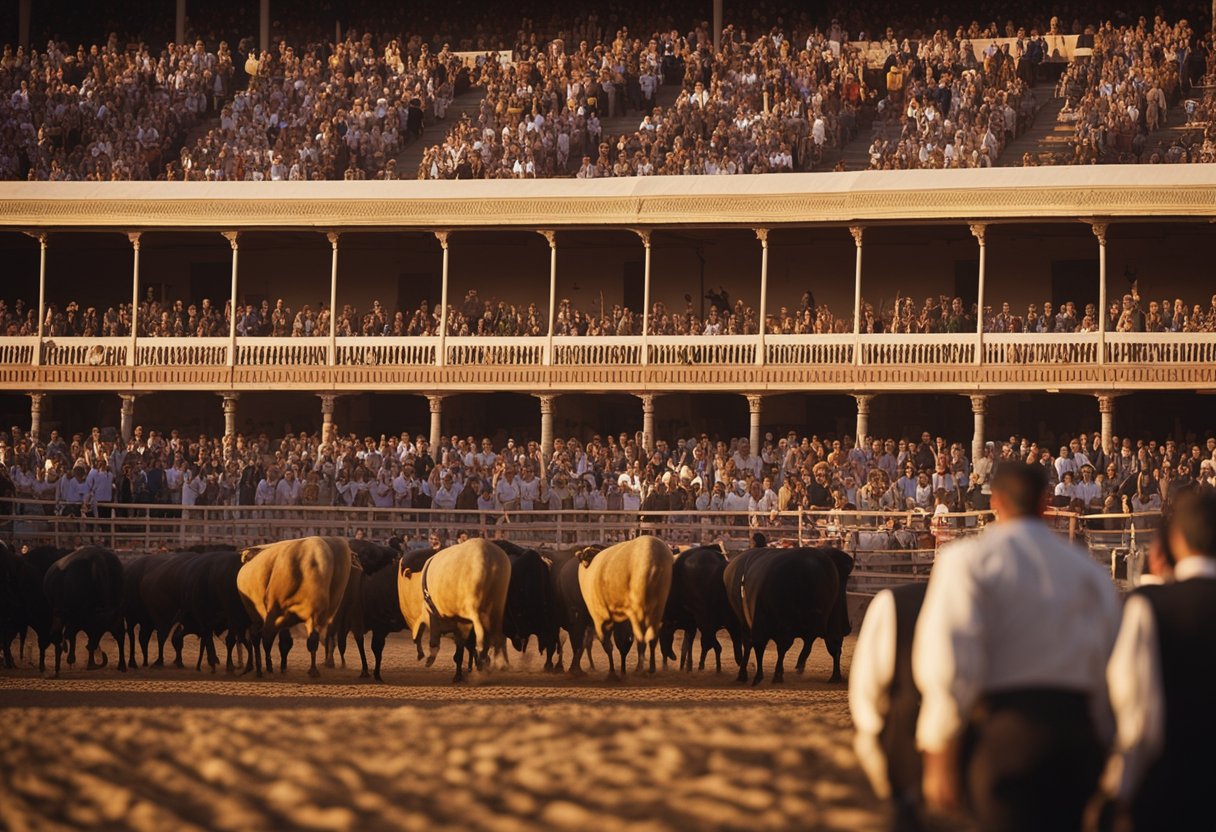
As custodians of culture and tradition, we must acknowledge the shifting tides that impact our cherished practices. The future of Spanish bullfighting hinges on several factors: evolving public opinion, potential legal reforms, and the brave steps towards possible change.
Changing Public Sentiment and Legal Reforms
A significant shift in public sentiment has brought the ethics and morality of Spanish bullfighting under scrutiny. Once heralded for its bravery, the spectacle is marred by controversy and an increasing call for reform. Legislative changes reflect this, with regions like Catalonia leading the charge, prohibiting bullfighting altogether. This trend intimates a future where legal reforms may extend to larger geographies within Spain, potentially influenced by the policies of the European Union that emphasise animal welfare.
Potential Scenarios for Bullfighting’s Continuation
Despite the decline in favourability, the potential scenarios for bullfighting’s continuance remain various and complex. An option could be reimagining bullfights without the lethal conclusion to the bulls, which may preserve the pageantry while responding to ethical concerns. Financial challenges, compounded by a decline in attendance, may drive the transformation of bullrings into multi-use venues, preserving their cultural significance as historical landmarks.
FAQs
In this section, we address some common questions surrounding the tradition of bullfighting in Spain, its role in society, its controversial nature, and the different aspects of its history and practices.
Why is bullfighting a subject of controversy in Spain?
Spanish Bullfighting is contentious due to concerns over animal welfare and ethical considerations. Critics argue it amounts to cruelty, while supporters claim it’s essential to Spanish culture and history.
Has bullfighting been banned in any regions of Spain?
Yes, bullfighting has been banned in the Canary Islands since 1991 and in Catalonia since 2012. The bans reflect growing public opposition to the practice in some parts of Spain.
How does bullfighting contribute to the annual mortality rate of bulls in Spain?
Each year, thousands of bulls are killed in bullfighting events throughout Spain. They face certain deaths in the ring, contributing to an annual mortality rate specific to these animals within the context of the tradition.
What traditions surround the running of the bulls, and why is it contentious?
The running of the bulls is particularly famous in Pamplona. Participants run in front of the bulls through the streets, an event that is both a thrill-seeking spectacle and a target of criticism due to its dangers to humans and stress to the animals.



